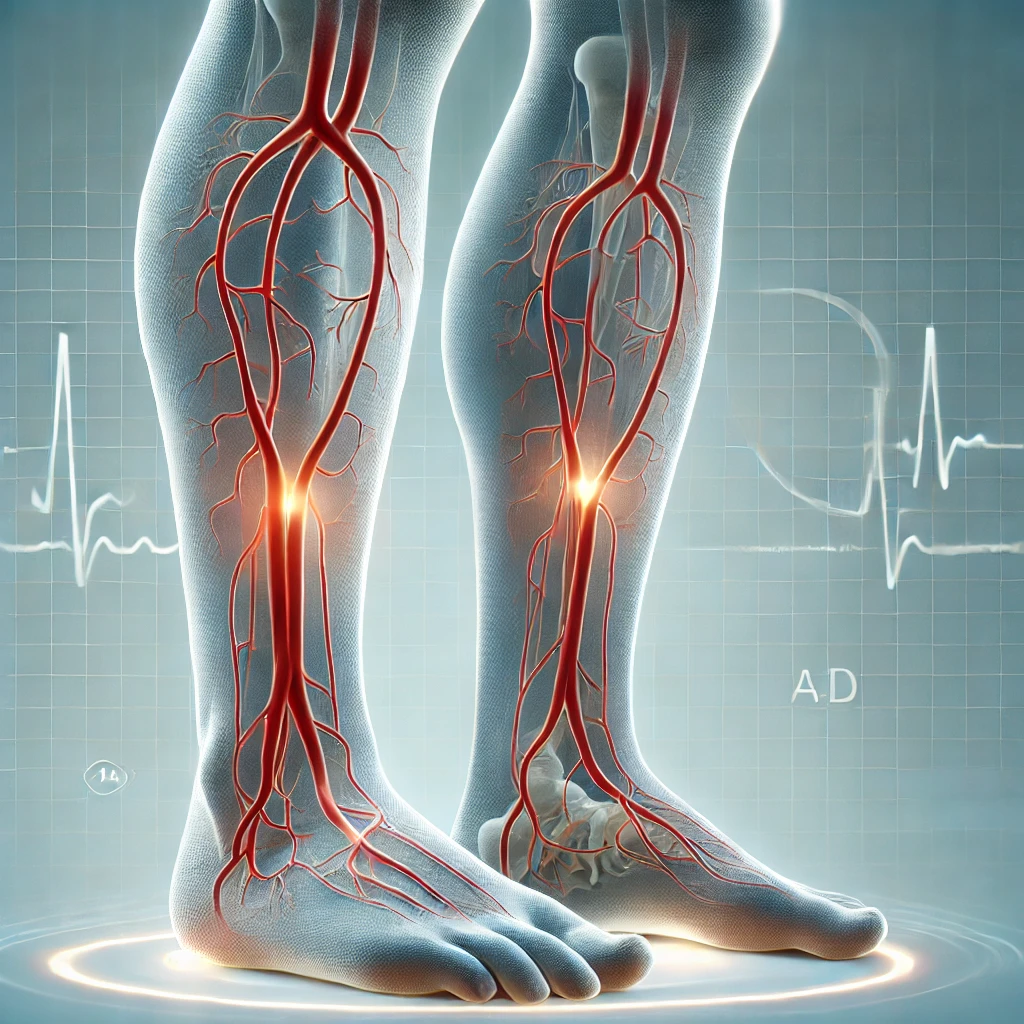
“Experiencing Leg Pain When Walking? Understanding Peripheral Artery Disease (PAD)”
Are you experiencing leg pain when you walk? You could have a condition called peripheral artery disease.
Peripheral Artery Disease (PAD): Symptoms, Causes, and Treatment
Peripheral Artery Disease (PAD) occurs when the arteries in your legs become narrow or blocked due to plaque buildup. This restriction reduces blood flow to the lower extremities, resulting in leg pain, numbness, and other complications. PAD is a widespread but treatable condition that can be managed with lifestyle changes, medication, and sometimes surgery. Here’s a deeper look into the causes, symptoms, treatments, and preventive measures for PAD.
What is Peripheral Artery Disease?
PAD primarily affects the legs, though it may also impact blood flow to the arms and other areas. If you experience symptoms, it’s essential to consult a healthcare provider right away, as early intervention can help prevent serious complications, including amputation or severe infections.
Recognizing the Symptoms of Peripheral Artery Disease
The symptoms of PAD can vary depending on the severity of the condition. Often, they are related to reduced blood flow to the legs and feet. Here are some of the most common symptoms:
- Leg Pain When Walking (Claudication)
Many people with PAD experience leg pain or cramping during physical activities, such as walking. This pain may subside with rest but often recurs when movement resumes. - Cold Feet and Toes
Restricted blood flow can lead to a constant feeling of coldness in your feet or toes. - Numbness or Tingling in the Legs
Poor circulation may cause numbness or tingling sensations in the lower limbs. - Changes in Skin Color and Texture
PAD can result in skin changes, such as a pale or bluish appearance, shiny skin on the legs, or hair loss in the affected area. - Leg Weakness and Fatigue
Reduced blood flow may also cause weakness, making it difficult to maintain activity levels.
Causes and Risk Factors for PAD
Peripheral Artery Disease primarily results from plaque accumulation, which restricts blood flow in the arteries. The following factors increase the likelihood of developing PAD:
- Smoking
Smoking damages artery walls and accelerates plaque buildup, making it one of the most significant risk factors. - High Blood Pressure
Elevated blood pressure contributes to artery damage, leading to plaque formation and potentially accelerating PAD progression. - High Cholesterol
Excess cholesterol promotes plaque deposits within arteries, which can narrow pathways for blood flow. - Diabetes
Individuals with diabetes are at higher risk of developing PAD due to blood vessel damage associated with high blood sugar. - Family History
A genetic predisposition to heart disease or PAD can increase the risk, especially when combined with other factors.
Treatment Options for Peripheral Artery Disease
Treating PAD depends on its severity, but early diagnosis often improves outcomes. Here’s a look at common treatment options:
- Lifestyle Changes
In mild cases, lifestyle changes like quitting smoking and adopting a healthy diet can improve blood circulation and help manage symptoms. - Medications
Doctors may prescribe blood thinners, cholesterol-lowering drugs, and blood pressure medications to control symptoms and prevent further artery blockage. - Surgical and Minimally Invasive Procedures
For severe PAD cases, surgery might be necessary. Some common procedures include:- Angioplasty: Using a small balloon to open narrowed arteries.
- Stenting: Inserting a stent to keep the artery open.
- Bypass Surgery: Creating an alternative pathway for blood flow around the blocked artery.
How Can You Prevent Peripheral Artery Disease?
Taking preventive steps is crucial, especially for those with higher risk. Here are a few strategies to help reduce your chances of developing PAD:
- Quit Smoking
Since smoking directly damages arteries, quitting is one of the most effective ways to prevent PAD. - Control Blood Pressure and Cholesterol
Regularly monitor and manage blood pressure and cholesterol through diet, exercise, and, if necessary, medication. - Manage Diabetes
For individuals with diabetes, controlling blood sugar levels can significantly reduce the impact on blood vessels. - Exercise Regularly
Physical activity improves circulation and supports healthy blood vessels, reducing the risk of PAD progression. - Eat a Heart-Healthy Diet
A diet rich in fruits, vegetables, whole grains, and lean proteins supports vascular health and can help prevent plaque buildup.
Conclusion: Why Early Diagnosis and Treatment Matter
Peripheral Artery Disease is a serious yet manageable condition that requires timely medical attention. If you or a loved one is experiencing symptoms, consulting a healthcare provider for an accurate diagnosis and appropriate treatment plan is essential. With early intervention, you can help prevent serious complications, improve your quality of life, and maintain mobility.
For More Information Click here


